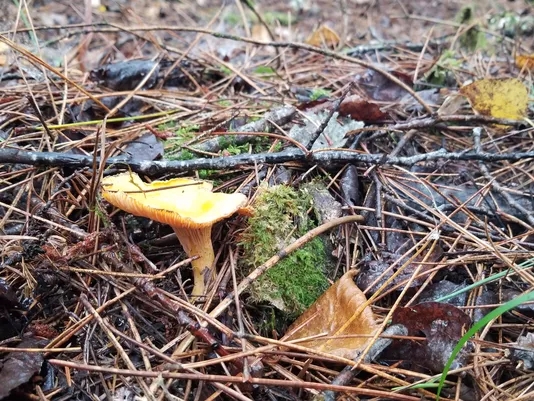
This summer has been the least amount of time I’ve spent on rivers, and given what’s in the schedule for the remainder of summer, that fact is unlikely to change. Rain, more rain and still more rain yet has made streams swollen and in some cases downright dangerous. Many lakes have gone to slow — no wake status. That rain has kept my boat in the garage. I can only imagine what it has done to the fields and psyches of rural Minnesota farmers.
There is usually a yin and yang in nature. What’s bad for some is good for another. In this case, the hot and humid days and significant rainfall of the past few weeks was hard on ground nesting birds like pheasants and a barrier for anglers to get out on streams and some lakes. What all the heat and rain has been good for is growing mushrooms. Summer’s golden chanterelles are coming in thick with such exceptional growing conditions.
Chanterelles are a revered mushroom for great taste (lightly peppery) and abundance among edibles pickers and cooks. They are popular in pasta dishes and risotto. Chanterelles are blonde to light yellow-orange in color and have an apricot aroma. They stick out on forest floors and have few look-alikes.
Chanterelles are found in groups or scattered. They have a flat and wavy cap with a slightly down-curled edge, are funnel-shaped with a solid stem and have very obvious ridged gills from under the cap to the stem. Check the gills for forks and crossveins — these are unique to chanterelles. They can be found from July to October in oak woods or around conifers. Don’t pick any smaller than an inch tall in order to allow time for their distinguishing characteristics to develop.
When starting your search for chanterelles, find an organic-lined forest floor that gets a lot of moisture. If you find areas where water is drained through a rill, follow it up and down and you may run into chanterelles, as their spores may be carried by the overland flow of water. Check areas that are near wetlands too. Maple, oak and poplar trees are usually good surrounding trees; red and white pine and spruce trees are good coniferous forest cohabitators.
When picking chanterelles, cut them with a knife or scissors at the base. Carry mushrooms in a basket or mesh sack to allow the spread of spores and to prevent digging into the earth that will disrupt the mycelium, or vegetative subsurface body. Clean your chanterelles with a quick rinse and check for dirt. Split the mushroom in half and look closely in the stem for soil or grit that may have been taken into the fungus. Follow up rain events with new searches. At this pace, it’ll be a chanterelle summer for the record books.
























